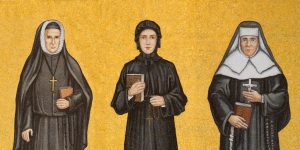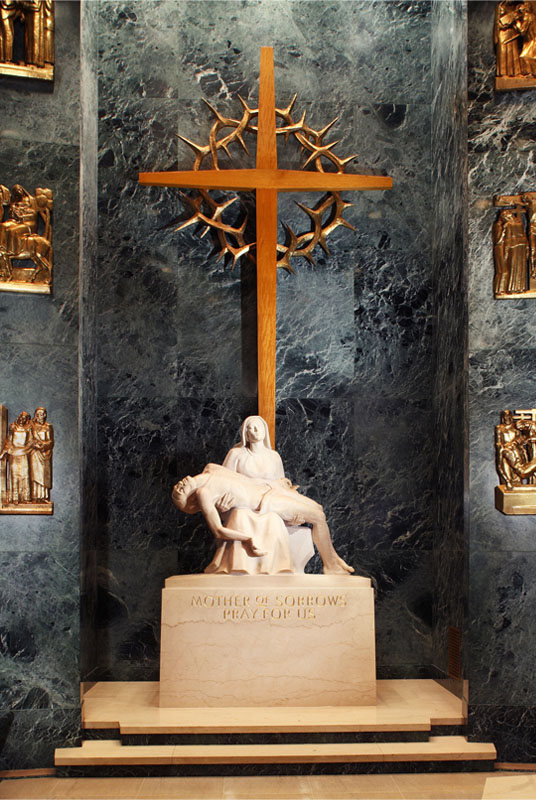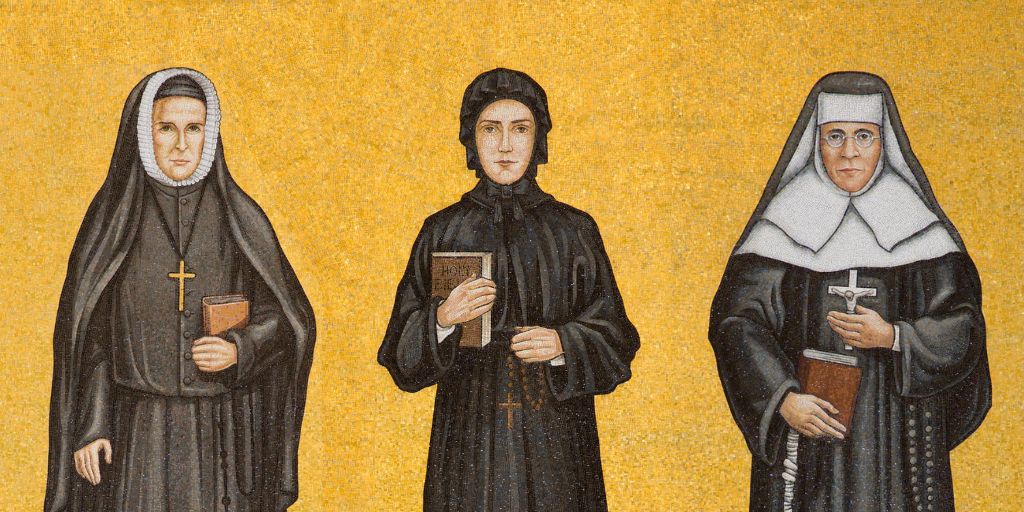
In recent centuries, women saints have played pivotal roles in furthering educational opportunities in America and around the world. It was a woman who founded the parochial education system in the U.S.; a woman who founded the first school for Native Americans in New Mexico; and a woman who opened the first free school west of the Mississippi.
These women each shared in common a love of learning and education. But above all, what drove each of them was a love for God – and that is what made their work so blessed.
As we begin another school year, we invite you to discover the stories of five women saints who were instrumental in furthering education and where you can find them in the Basilica.
1. St. Angela Merici
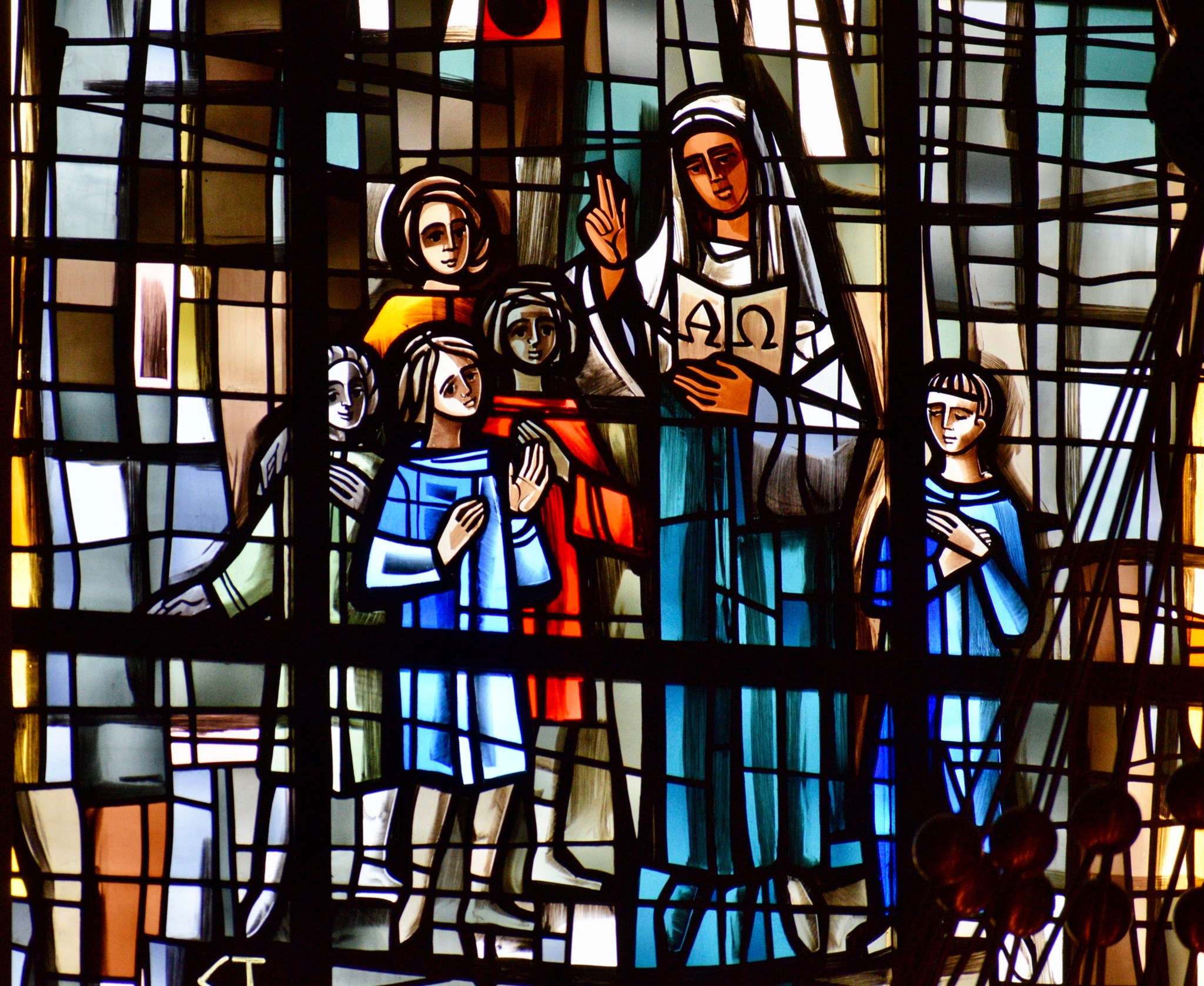
The founder of the Order of St. Ursula, St. Angela Merici was born in Italy in 1474. After losing her parents and sister at a young age, she joined the Third Order of St. Francis, pledging herself to Christ. When she returned to her hometown of Desenzano at age 20, she was struck by the aimlessness of so many of the young women there. Few had received an education, and many struggled to find purpose. Their plight weighed on Angela’s heart, and she soon realized she needed to act. She began a variety of educational initiatives, first by opening her own home and then founding schools in Desenzano and Brescia.
In 1535, she created a teaching order under the patronage of St. Ursula, beginning with 12 young women. Called Angela’s Company of Saint Ursula, or the Ursulines, it was a “secular institute” – a group of women consecrated to Christ, but living in the world as opposed to a monastery. It was also the first teaching order of women in the Church. Though the members of the organization wore no formal habit or took vows, they held to a “Rule of Life” written by Angela that included a pledge to celibacy, poverty, and obedience. Throughout all the Ursulines’ pursuits, Angela’s goal was to improve the lives of families through the education of future wives and mothers. Today, the Company of St. Ursula continues Angela’s mission of education, with members in 30 countries around the world.
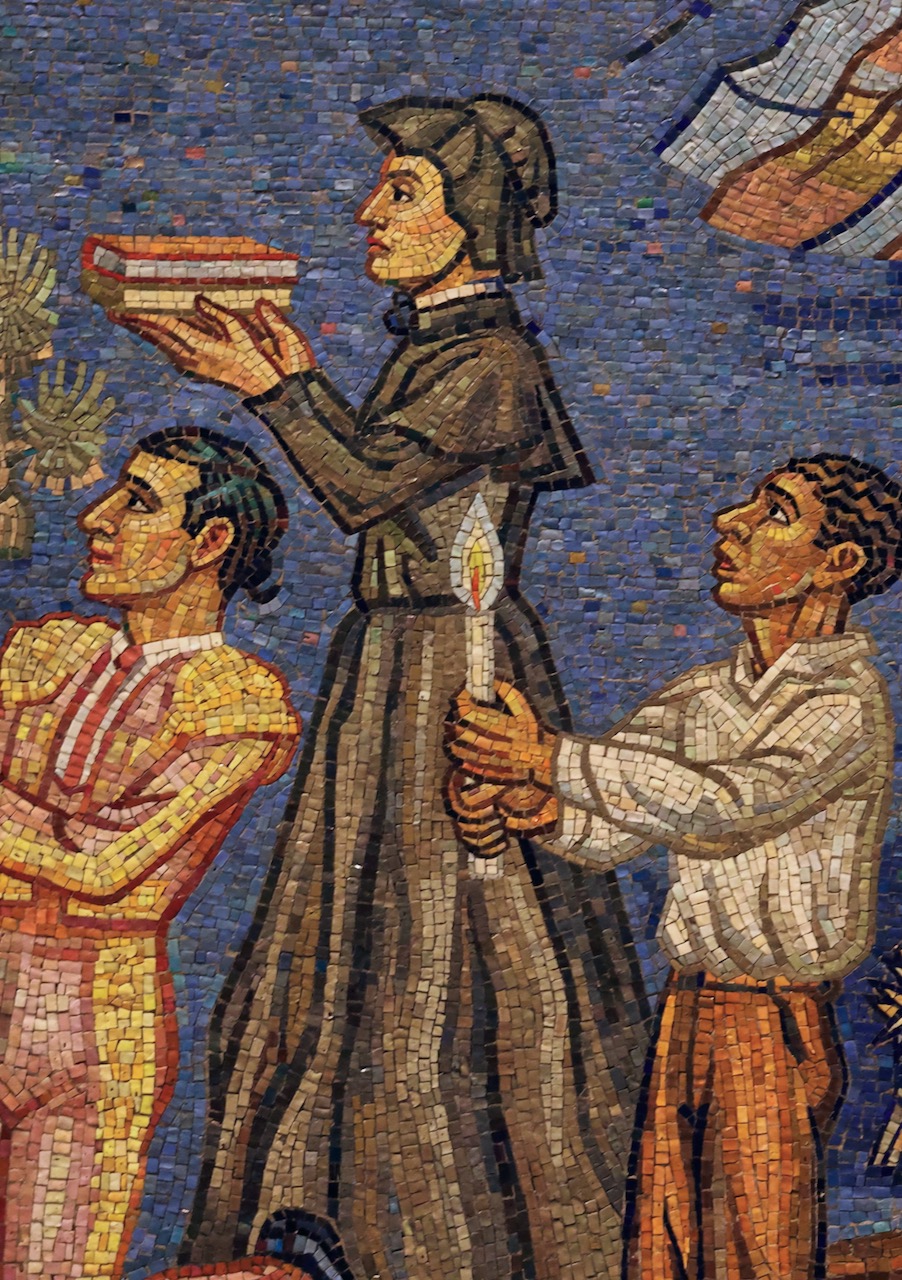
2. St. Elizabeth Ann Seton
The first native-born American citizen to be canonized as a saint, Elizabeth Ann Seton is best known for her role in starting the parochial education system in America. Born on August 28, 1774, on Staten Island, Elizabeth was originally raised in the tradition of the Episcopal church. After spending time in Italy, she was struck by the beauty of Catholicism and converted in 1805. Following her husband’s premature death, Elizabeth started a Catholic school for girls in Baltimore, Maryland, at the request of a priest. Elizabeth’s most lasting impact, however, was the founding of the Sisters of Charity of Saint Joseph’s in 1809 – the first religious order in America. This order helped hospitals and orphans, but its most prominent work was in establishing the parochial education system in America. Elizabeth’s devotion to educating children and caring for the less fortunate has had an impact lasting well beyond her own life.
Mother Elizabeth Ann Seton is depicted on the exterior tympana of the West Façade, the Hall of American Saints, Miraculous Medal Chapel window, Our Lady of Guadalupe Chapel, and the Trinity Dome Mosaic.
3. St. Rose Philippine Duchesne
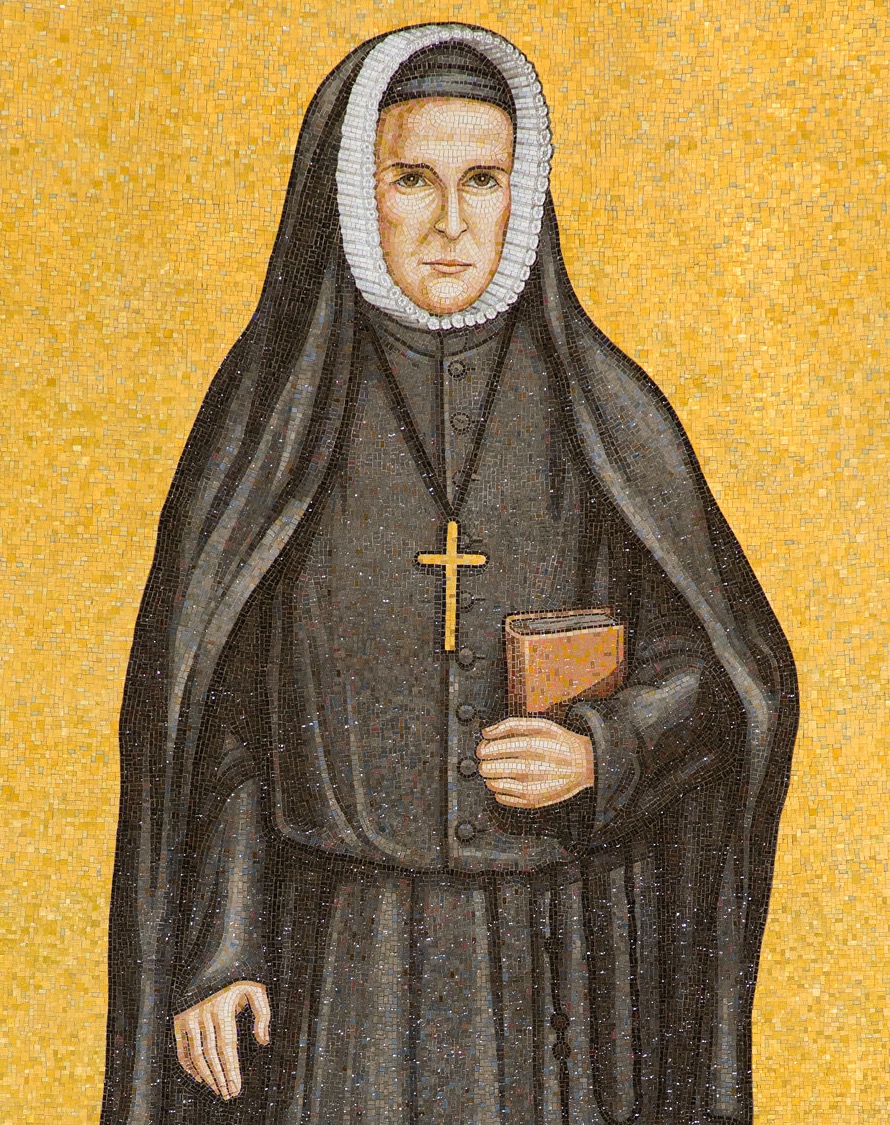
On August 29, 1769, Saint Rose Philippine Duchesne was born in Grenoble, France. When she was 18, she joined the Convent of the Visitation of Saint Marie d’en Haut as a novice. A few years later in 1804, she joined the Society of the Sacred Heart of Jesus as a novice. There, she felt a deep calling to pursue missions. Yet despite the sense of urgency she felt, Philippine was unable to pursue foreign missions until 12 years later.
In 1818, Philippine finally traveled to St. Charles, Missouri, with five other women to found the first order of the Society of the Sacred Heart outside of France. The mission was not without challenges: Philippine had trouble learning English and interacting with the Native Americans, and also faced financial difficulties. She founded the first free school west of the Mississippi that year, and within the decade, founded six houses.
In 1852, Philippine passed away at age 83. She is honored in the Basilica in a statue in Memorial Hall and in the Trinity Dome mosaic. In 1988, Rose Philippine Duchesne became the fourth citizen of the United States to be canonized.
4. Mother Théodore Guérin
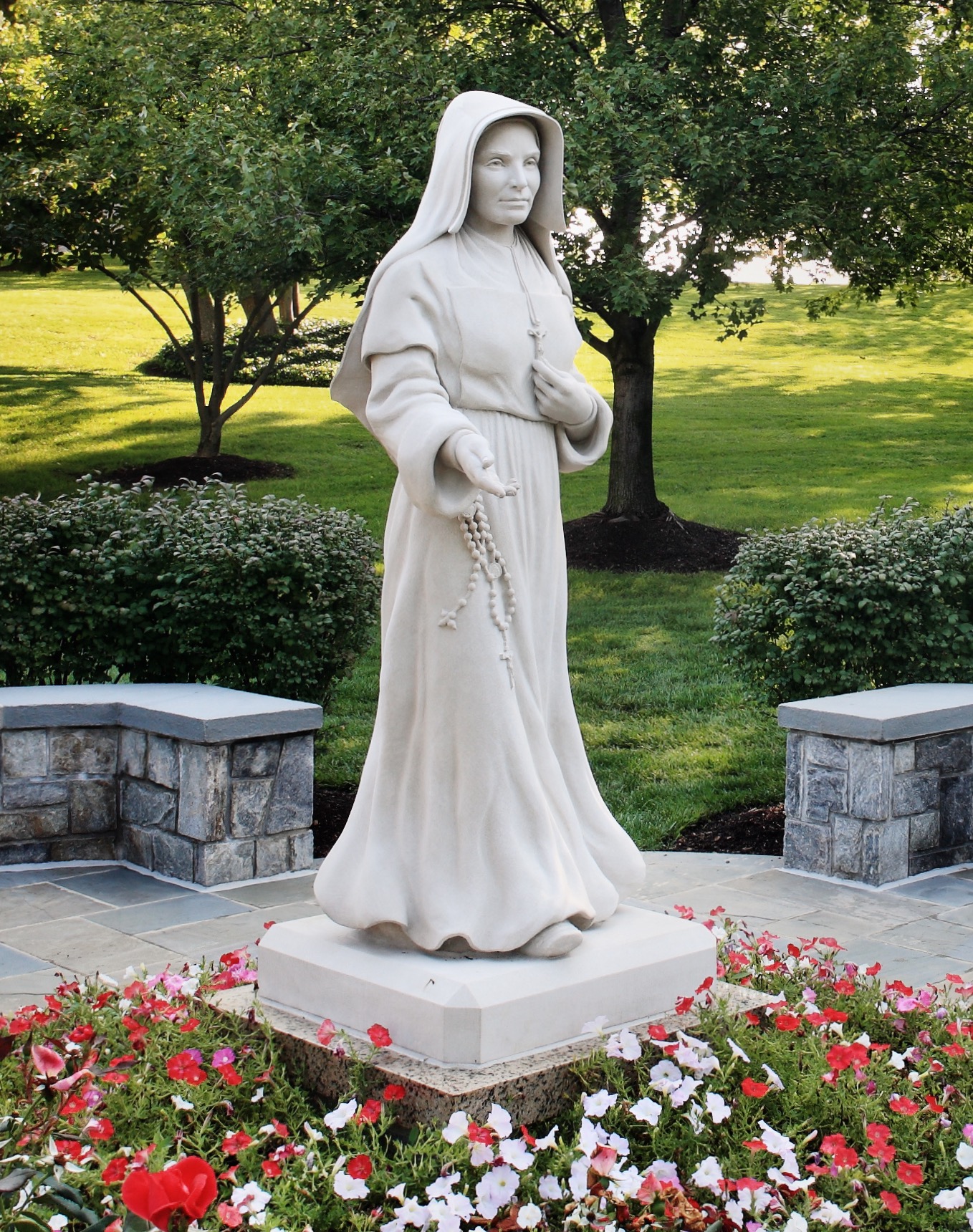
Saint Théodore Guérin was born as Anne-Thérèse on October 2, 1798, in the town of Estables, France. The girl was devout from a young age, and at age 10, she told a parish priest that she intended to be a nun. When Anne-Thérèse was only 15, her father was murdered by bandits, leaving her to care for her mother and sister. In the face of personal tragedy and difficulty, Anne-Thérèse turned to God for solace.
At age 25, she joined the Sisters of Providence of Ruillé-sur-Loir, a religious order focused on caring for the sick and impoverished, as well as furthering children’s educational opportunities. There, she became known as Théodore, and was asked to take a group of women on a mission to Indiana to minister to pioneers.
In Indiana, Théodore founded the order of the Sisters of Providence of Saint Mary-of-the-Woods, establishing a motherhouse and a school. They faced untold trials in Indiana – from starvation and bitter winters to prejudice against Catholics. Throughout everything, however, she relied solely on God, telling her sisters, “Put yourself gently into the hands of Providence.” Théodore went on to establish two orphanages and more schools in the region, and eventually passed away on May 14, 1856. She is portrayed at the Basilica in a life-size limestone statue adjacent to Mary’s Garden and honored in a tablet in Memorial Hall.
5. St. Katharine Drexel
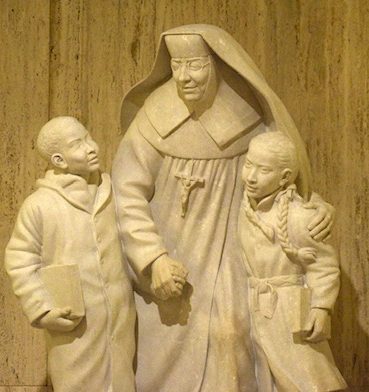
The second American-born saint to be canonized, Saint Katharine Drexel was known for her commitment to racial justice and her educational efforts for minority groups in America. Katharine was born into an affluent Philadelphia banking family in 1858. After discovering the poor living conditions endured by Native Americans during her family’s travels, Katharine decided to use her inheritance to establish the Sisters of the Blessed Sacrament in 1913, which was dedicated to sharing the Gospel with Native Americans and African Americans.
Throughout her lifetime, she continually advocated for minorities, crusading for better educational opportunities and standing against racial discrimination and injustice. In 1894, she opened the first mission school for Native Americans in New Mexico, and in 1915, she founded Xavier University, an institution of higher learning for African Americans in New Orleans. By the start of World War II, she had founded schools for African Americans in 13 states, and 50 schools for Native Americans in 16 states.
Unfortunately, her efforts were not welcomed by all: she faced the opposition of segregationists, who burned down one of the schools she founded in Pennsylvania. At age 76, Katharine retired from her management roles after suffering a cerebral hemorrhage, but continued to live in adoration and contemplation until the age of 97. Today, she is recognized as the patroness of racial justice and philanthropists.
Sources:
Butler’s Lives of the Saints, ed. by Bernard Bangley.
“Katharine Drexel (1858-1955),” The Vatican.
Rohling, Geraldine M., PhD, MAEd. The Basilica of the National Shrine of the Immaculate Conception: Guide and Tour Book. Washington, D.C.: Basilica of the National Shrine of the Immaculate Conception, 2018.
“Saint Angela Merici,” Catholic News Agency.
“Saint Angela Merici,” Catholic Online.
“Saint Angela Merici, Franciscan Media.
The Way of the Saints, Dr. Tom Cowan.

